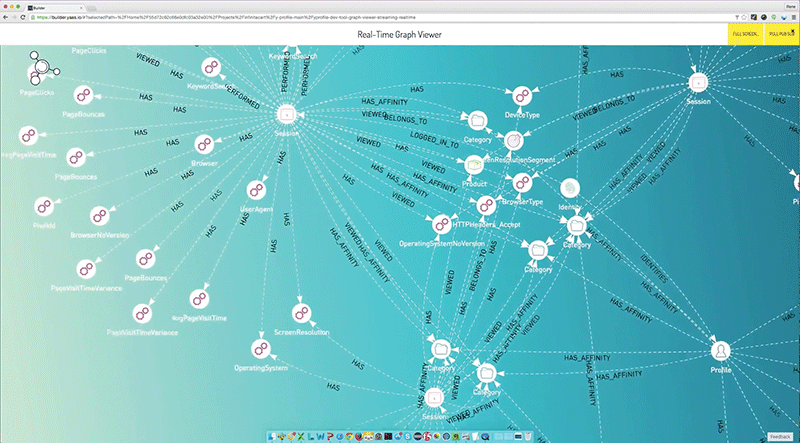The Disruptive Dynamics of Customer Engagement
Meeting the Needs of the Digital Customer with SAP Hybris
Engaging customers is hard. It’s no secret that regardless of industry, customers want more individualized, consistently great experiences than ever. But understanding these demands and actually satisfying them are two very different things. Most departments are focused on addressing their own challenges — marketing on Facebook, offering live-video support, adding a mobile shopping experience — but it takes a concerted approach across the front office to really engage the customer.
With this in mind, SAP set out to redefine how businesses deliver compelling customer experiences that disrupt their competitors. As we did this, we applied a very simple but very effective rule of thumb: set aside the traditional departmental boundaries, remits, or internal parameters found in every organization, and instead, focus on what the end customer wants and find a way to help companies satisfy those wants in simple, sustainable ways. The culmination of these efforts is SAP Hybris — a comprehensive suite of customer engagement and commerce solutions that help companies deliver great customer experiences across every channel, while reducing system and process complexity in the front office.
But why take a single-vendor approach? And how exactly does SAP Hybris help businesses succeed in the new customer reality? This article looks at the limitations of a bolt-on approach, the changing nature of customer expectations, how SAP Hybris helps businesses meet these expectations, and how new features for SAP Hybris help keep pace with evolving customer requirements.
The Real Cost of the Bolt-On Approach
In the early days of the digital economy, CIOs were suddenly thrust into the role of supporting an increasing array of channels and touch points demanded by customers with rapidly changing needs. CIOs had to figure out how to support a growing number of social media channels, deploy e-commerce systems, offer web chat capabilities for the contact center, and implement mobile access for the sales team — and these examples are just the tip of the iceberg.
Each new tool brought localized benefits, but at the cost of added complexity. To make matters worse, you could pretty much guarantee that none of these systems shared data or spoke to each other, especially in the case of cloud solutions bought by specific departments, independent of IT. In short, software proliferated, but the view of the customer became ever more atomized.
While this bolt-on approach was not wrong for the times, it has definitely taken a toll on businesses. In a 2015 SAP Hybris survey of over 900 business leaders, a majority of CIOs and CMOs admitted that they still lack any actionable intelligence on their customers, or that if they do have intelligence, it is siloed — kept away from other parts of their operation. To compound the problem, 60% of marketing leaders surveyed reported that their various technology tools are impediments to delivering on their company’s vision and goals. In addition, 76% of sales leaders said they lack the insight required to optimize sales efforts, and 89% of commerce leaders still get no usable data from their mobile platforms. The evidence is clear: Organizations need to consolidate their front office technologies if they want to keep customers engaged.
Software proliferated, but the view of the customer became ever more atomized.
Moving Beyond CRM
This need for consolidation has grown both more urgent and broader in scope. Today’s end customers are dramatically different from the ones that traditional customer relationship management (CRM) solutions were designed to serve. With their mobile devices and the web, they can plot their own course through the world of goods and services. They form opinions from what they have read online or liked on social networks, respond to tips shared by global influencers, and tag brands in photos while out socializing. Modern customers are researching, learning, sharing, and judging all the time.
This level of personal empowerment means that however circuitously they get to your door, customers expect a relevant, personalized, and delightful experience once they arrive. They want that experience to be in context of where they are, what they’ve done, what they’re doing, and what they want to do. To deliver on this, you need to understand their journey and bring insight together with interaction in real time, on every channel, at any moment — a major challenge for any business.
Providing this type of unified experience calls for far more than what a basic CRM system can deliver. It requires dynamic customer profiles and connected business processes that cross departmental boundaries so that everyone, and every system, operates with the same understanding of the customer. It requires technology that can optimize experiences in the moment to deliver individualized, relevant content directly to the customer on digital channels, or to a sales or service person during person-to-person interactions. And it requires agility — in systems and processes — to enable the constant transformation that is required to develop new business models and continually disrupt competitors.
Designed for Transformation
The SAP Hybris portfolio was designed with three overarching goals in mind. First, SAP Hybris seeks to empower businesses to deliver market-redefining customer experiences. In the digital economy, the quality of the interactions customers have with brands is everything. This is what turns intrigued awareness into enthusiastic sales, and seamless delivery into brand advocacy. To ensure high-caliber customer experiences, SAP Hybris enables companies to manage and deliver these interactions across many different channels in a unified manner.
SAP Hybris also aims to simplify the front office. It declutters your operations not only by solving the challenges that plague individual departments, such as improving sales forecast accuracy or streamlining marketing campaign execution, but also by eliminating bolt-ons and connecting the organization to address cross-departmental issues, such as sales follow-up to new marketing leads, or handling pre- and post-sale questions on social media. SAP Hybris enables you to implement one solution set for everything, from digital customer experiences to one-to-one sales meetings, and from marketing campaigns to field service. As a result, the customer journey is far smoother, and you can shift your energy from managing integrations to delivering innovations that make a difference to your customers.
Above all, SAP Hybris lets you run an agile, consumer-centric business. In this case, agility is not some fancy business metaphor: It’s real. The digital economy is driven as much by changing customer expectations and demands as it is by products or services. You cannot just get something right once and then sit back. You need a business model that evolves and keeps customers’ attention by continually getting things right in new ways. This means developing agility, and that only comes when the lines between sales, marketing, and customer service begin to blur.
An Evolving Portfolio
The team at SAP Hybris lives the change that I have described here. We conceived our products as an evolving suite of solutions that adapt and grow to suit our customers’ changing needs. New services are constantly being added, ones that help you capture more customer intelligence, improve the quality of engagement, and drive better experiences. Some examples of this innovation can be seen in our newer products.
For instance, SAP Hybris Profile, introduced in September 2015, allows companies to build a dynamic profile of a customer by drawing on customer data from every available source, internal or external, and applying predictive analytics to these insights to suggest specific offers, follow-ups, or other actions in real time. Also launched in late 2015, SAP Hybris Customer Experience is a content management system that uses the customer’s profile to deliver dynamic, targeted, and consistent content across channels, aligning the customer’s digital and physical experiences.
Another recent innovation is SAP Hybris as a Service on SAP HANA Cloud Platform, which is at once a marketplace, an application builder, and a community for organizations looking to bring new experiences to the market quickly (see the sidebar “SAP Hybris as a Service: A Microservices Approach for Big Ideas”). It is the basis for an agile, market-oriented approach to extending existing applications as well as composing entirely new ones to meet your unique business needs. Whether you are a developer or a leader looking to innovate, SAP Hybris as a Service offers a fast way to address customer experience challenges, such as quickly adding a loyalty program to your commerce site or adding the ability to store and manage social media data in an app (see Figure 1).

Be the Disruptor, Not the Disrupted
As the trajectory of the digital economy steepens, the opportunity for disruption increases. The gap between rapidly shifting customer expectations and your ability to meet them is the open door for digitally transformed competitors to draw your customers away. In simplifying and optimizing your customer engagement systems and processes, you can close that gap and become the disruptor rather than the disrupted. Learn more at https://sap.com/beyondCRM.






